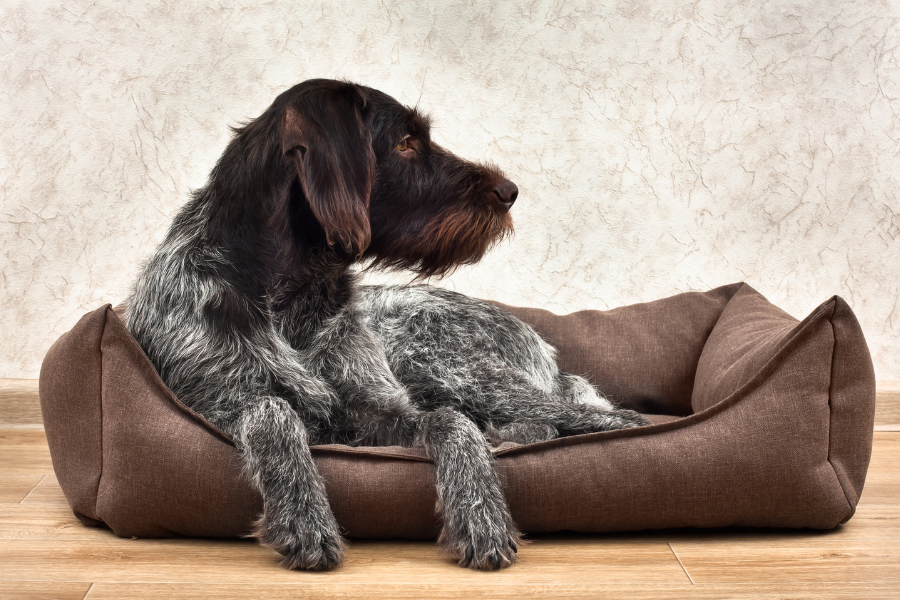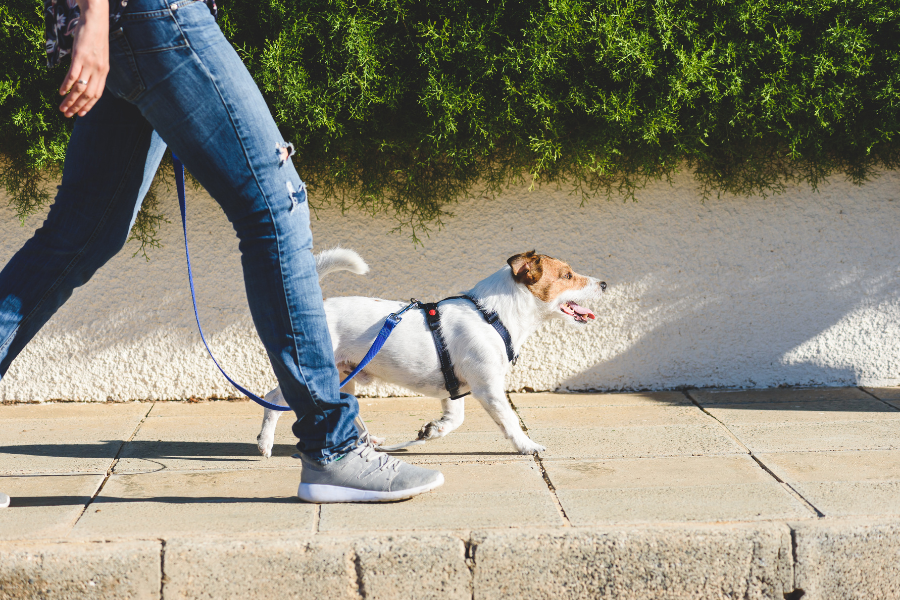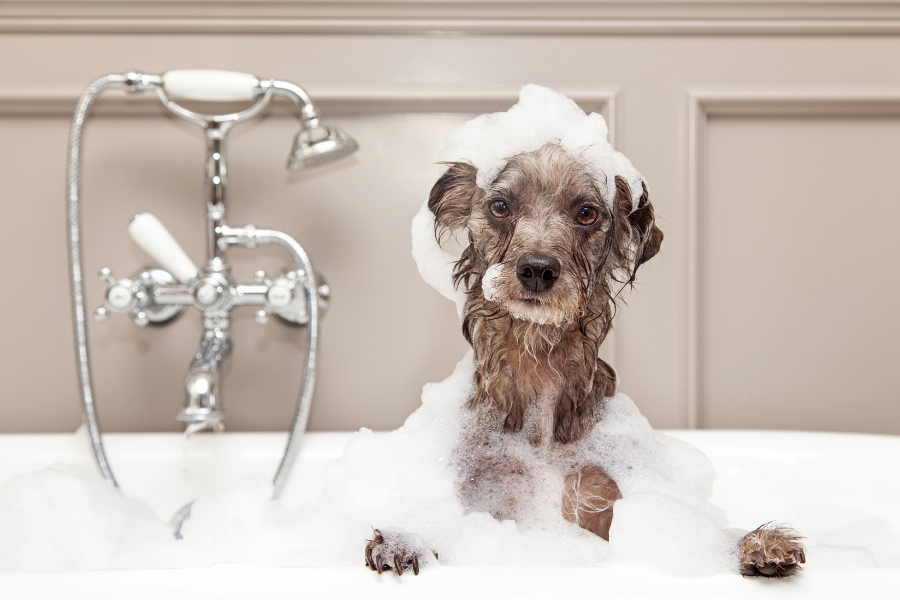Hey there, fellow dog lovers! Is your furry friend's bed starting to look like it's been through a bit of a ruff time? Don't worry; we've all been there. That once pristine and fluffy bed now resembles a wild battlefield, complete with stains, fur, and that unmistakable doggy aroma. But fear not! Today, we're going to tackle this head-on and turn that daunting task of cleaning a dog bed into a walk in the park. Ready? Tail wags all around—let's jump right in!
Key Takeaways
- Get Prepared: Before we dive in, make sure you've got all your cleaning supplies ready. Think detergent, stain remover, and maybe even some baking soda for those extra stubborn smells.
- Spot Clean First: Tackle any obvious stains with a bit of elbow grease and your trusty stain remover. This pre-clean can make a huge difference!
- Wash Time: If your dog bed cover is removable, pop it in the washing machine according to the manufacturer's instructions. For those beds without removable covers, a gentle hand wash will do the trick.
- Fresh as New: Make sure the bed is thoroughly dry before giving it back to your pooch. Dampness can lead to mildew, and nobody wants that!
- Maintenance Is Key: Regularly brushing off fur and airing out the bed can keep it from becoming a daunting task in the future. Plus, your dog will thank you for a fresh spot to snooze.
Sniffing Out the Problem
First things first, why is it important to keep your dog's bed clean? Well, aside from the obvious reasons (like avoiding your home smelling like eau de doggo), regularly cleaning your dog's bed can help keep your pup healthy by removing dust, dirt, and allergens that can accumulate over time. Plus, it makes their sleeping spot more comfortable and welcoming, ensuring sweet dreams of chasing squirrels.
Unraveling the Mystery: Why Some Dogs Smell More Than Others
Ever wondered why some pups seem to carry a bit of extra... aroma compared to others? It's not just your imagination! There are a few fluffy factors contributing to this fragrant phenomenon. First off, it could be something as simple as your dog's breed. Yep, certain breeds are just naturally a bit smellier due to their skin's oil production. Breeds with more folds in their skin or those with longer coats can trap more dirt, oil, and moisture, creating a perfect storm for a stinky situation.
Another culprit might be your dog's lifestyle. Adventurous dogs who love rolling in the grass and exploring every muddy puddle they find are going to pick up more odors than their more couch-potato-y counterparts. Also, diet plays a surprising role in how your dog smells. Some foods can lead to a stronger doggy odor from the inside out.
And don't forget about health issues. Skin infections, ear infections, or dental problems can all lead to an increased smelliness. If you're keeping your dog's bed clean but find they're still a bit on the nose, it might be worth a vet visit to make sure everything's A-OK health-wise.
Remember, every dog has its own unique scent signature, and that's part of the charm of being a dog parent! But understanding why some dogs might smell more than others can help us take better care of them, ensuring they're healthy, happy, and as fresh-smelling as possible.
Gathering Your Tools
Before we get started, here's what you'll need:
- A vacuum cleaner with an upholstery attachment
- Mild, pet-safe laundry detergent
- Baking soda (your secret weapon against odors)
- A scrub brush or sponge
- Your washing machine (for those beds that fit)
- Some sunshine or a well-ventilated area for drying
The Battle Plan
Step 1: De-Furring the Fortress
Begin by removing as much loose fur as possible. A vacuum cleaner with an upholstery attachment is perfect for this task. For the stubborn, clingy fur, a lint roller or a damp rubber glove can work wonders. This step helps make the rest of the cleaning process smoother and keeps your washing machine from turning into a furball.
Step 2: Pre-Treat the Stains
Next up, tackle any visible stains. Your dog's bed is the canvas to their masterpiece of messes, but that doesn't mean those stains need to stay. A mixture of water and pet-safe laundry detergent can help lift most stains. For tougher spots, a bit of baking soda and water can form a paste that, when applied with a brush or sponge, can work miracles.
Step 3: The Great Wash
If the dog bed is machine washable (always check the label first—learning to read hieroglyphs is easier than decoding some of those symbols), pop it into the washing machine. Use a pet-safe detergent and opt for a gentle cycle with warm water. For an extra boost of freshness, adding a half cup of baking soda to the wash can neutralize odors without the use of harsh chemicals.
For beds that can't take a spin in the washer, a good old-fashioned hand wash will do the trick. Use your scrub brush or sponge, some mild detergent, and elbow grease to work out the grime. Rinse thoroughly with clean water.
Step 4: Drying—The Fluffening
Once the bed is clean, it's time to dry it. If the care label gives you the green light, a low heat setting in the dryer can fluff up the bed nicely. Otherwise, air drying in the sun not only helps dry the bed but also naturally deodorizes it (thanks, Mother Nature!). Ensure the bed is completely dry before inviting your dog back for a snooze, as dampness can breed bacteria and mold.
Step 5: Maintenance Between Battles
To keep the bed smelling fresh between deep cleans, sprinkle baking soda on the bed, let it sit for about 15 minutes, then vacuum it up. This can help absorb any lingering odors and keep the bed inviting for your pooch.
The Tail End
Congratulations! You've successfully navigated the wilds of cleaning your dog's bed. Not only have you created a cozy and clean retreat for your furry companion, but you've also ensured their sleeping space is healthy and hygienic. Regular cleaning not only extends the life of the bed but also contributes to your dog's overall well-being.
Remember, a clean dog bed leads to a happy dog (and a happy you!). By incorporating these steps into your routine, you can ensure your pup's bed remains a comfy, cozy haven they'll love to curl up in. Now, go enjoy some well-deserved cuddles with your freshly-snuggled pooch. They're sure to appreciate all your hard work!
Sprucing Up and Sanitizing 101 - FAQ
How do you clean and sanitize a dog bed?
Alright, fur buds, you've got the basics down, but how do you really get down to the nitty-gritty of sanitizing that dog bed? First up, yes—it's totally okay to wash a dog bed in the washing machine, as long as the care label gives you the thumbs up. This is by far the easiest method to give it a thorough cleanse, but do remember to use a pet-safe detergent and skip the fabric softener (it can irritate your pup's skin).
How often should you wash your dog bed?
Now, how often should this laundering fiesta happen? Aim for a suds party every 1-2 weeks to keep things fresh and hygienic. If your furry pal enjoys rolling in mud or has a knack for finding every puddle in a 5-mile radius, you might need to do this more often.
Can I sprinkle baking soda on my dog's bed?
And for the million-dollar question about baking soda—heck, yes, you can! Baking soda is like a magic dust for dog beds. It's a safe and effective way to neutralize those not-so-pleasant odors. Just sprinkle it on the bed, wait for about 15 minutes (or even overnight if you're dealing with a real funk), then vacuum it up. It's a quick fix for freshness between those wash cycles.
In short, keeping your dog's bed clean and smelling like a dream is all about regular washes, knowing your bed's care instructions, and using some trusty baking soda to keep things in tip-top shape. Your pooch's bed isn't just where they sleep; it's their safe spot. Keeping it clean means showing them love in one of the best ways possible—with comfort and care.
Is My Dog the One Who Needs the Bath?
Not to point paws or anything, but if you're noticing a bit of a whiff even after the bed's been cleaned, it might be your dog that's bringing the funk. Dogs can get smelly for a heap of reasons - from rolling in something less-than-fragrant to just needing a good, old-fashioned bath. Plus, different breeds or health conditions can make some pups more prone to odors.
First off, give your doggo a good sniff. Are they smelling a bit more "natural" than usual? Check for any signs that it's time for a bath - like dirt, mud, or mysterious sticky stuff in their fur. It's also worth peeking at their ears and paws; these spots can harbour smells if not cleaned regularly.
Remember, though, not all dogs should be bathed too frequently as it can dry out their skin and fur. Depending on your dog's coat and skin type, a bath every few weeks to months may be plenty. Always use a dog-specific shampoo, and if you're in doubt about what's best for your buddy, have a chat with your vet. They can offer advice on bathing schedules and products that'll suit your furry pal just right.



